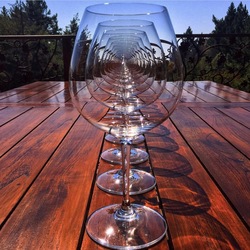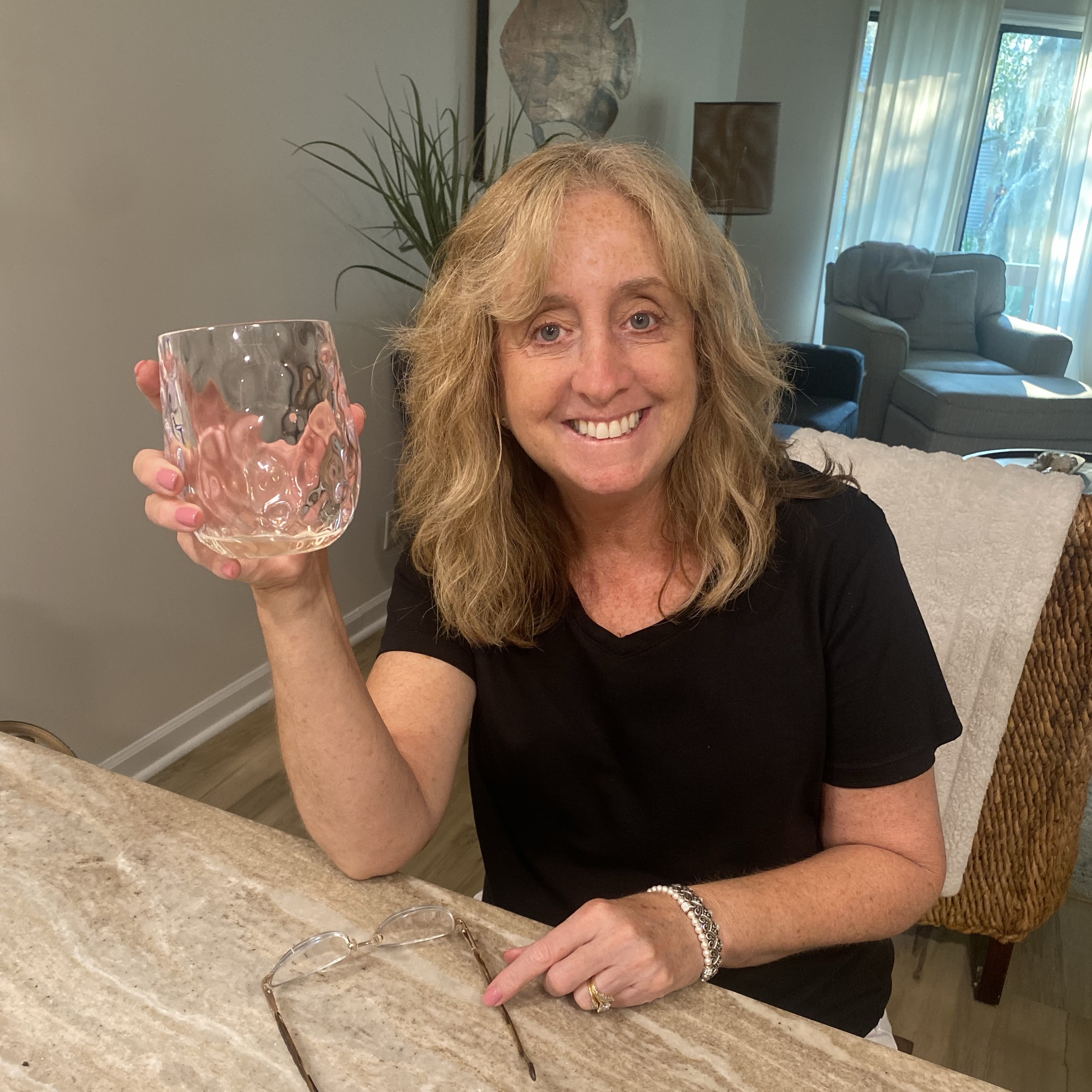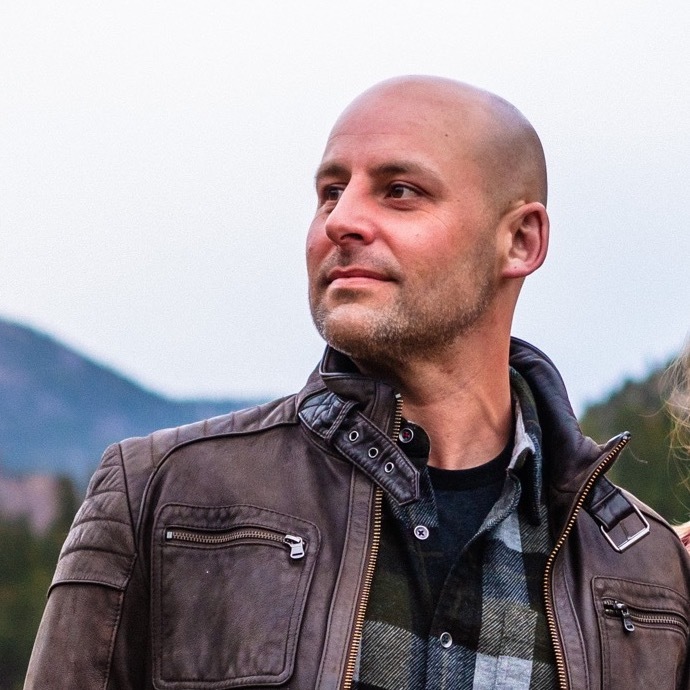Blood Brother Republic
Domaine des Tours
Réserve Vin de Pays de Vaucluse Red Rhone Blend 2012
Blood orange,liquorice , strawberry, violet (?), grilled meat(?!) on the nose. I could spend the evening with my nose upon this glass! What a nose ! Blood orange again on the palate which tends to have this bitter feeling all along the acid backbone. Red fruits around there too. Not as Burgundian and ethereal and precise as the chateau (cdr) in the same vintage but I can feel the lineage here. The finish is long with a bitter salty touch. Wow again. For a 13€ price-tag I could have this any given day. Perhaps one of the best value ever encountered. I can’t wait to open the big big brother fonsalette — 8 years ago
Richard Stavek
Mlady Boček 2015
What a crazy wine. Nose of lychee, passion fruit, rose petal, and orange rind. Palette of juicy blood orange and fresh mulberries. Super dark in color but drinks super light. Second time trying it and I like it even better. If you want something just way different but drinkable, this is it. Drink it alone, drink it with dessert, drink it with some Eastern European stews, or just drink it to be blown away. — 8 years ago
Blood Brother Republic
McLaren Vale Shiraz Mataro
Very nice, Woody feel — 8 years ago
Blood Brother Republic
KG Vineyard Shiraz 2016
Flavourful, full bodied, well balanced tannin on the stronger side. Goes well with steak. — 6 years ago
Krug
Brut Rosé Champagne Blend
There are certain occasions that call for Krug Rosé. So, HBTM! The bottle was corked in the summer of 2014. It’s a blend of 45 reserve wines with the oldest being from 2007 and the youngest 2002. This is why I think Champagne Makers are some of the most talented people making wine. They are constantly blending up to 100 plus wines to bring that bottle to bottle and year to year branded flavor of consistency. On the nose; red & pink spring flowers, cherries, strawberries, watermelon, black cherry, black raspberries, notes of blood orange citrus, baked bread, soft volcanic mineral and elegant chalkiness. The palate is always ridiculously delicate. Micro bubbles, silky rich texture with beautiful soft acidity. The palate fruits are similar to the nose; rich & ripe cherries, strawberries watermelon, black cherry, black raspberries, notes of blood orange citrus with hints of marmalade. Red & pink spring flowers, baguette crust, soft powdery minerals that give the palate a slight sting and super powdery chalkiness done just right. The finish is beautifully rich, textured, revealing itself in layers and lasts minutes. Photos of; Founder Joseph Krug, House of Krug, Winemaker Eric Lebel, Krug’s Clos du Mesnil, a small plot of 1.85 hectares of Chardonnay...one of the world’s greatest vineyards and their salon tasting room. Producer history & notes...Krug was founded by Joseph Krug in 1853. They are based in Reims, the main city in France’s Champagne region. It is one of the famous Champagne houses that formed part of the Grande Marques. Today the house is majority owned by the multinational conglomerate LVMH, which owns Moët Hennessy, Louis Vuitton S.A. and who’s wine producer portfolio includes other well known wine brands such as; Moët & Chandon, Veuve Clicquot, Château d'Yquem, Ruinart & Cheval Blanc, Dom Perignon and many others. Despite LVMH's majority ownership, the family is still actively involved in all the key decisions of the house but does not manage the day-to-day operations. Joseph Krug was born Johann-Joseph Krug, a butcher’s son, in Mainz, on the Rhine in 1800 when the city was part of the Napoleonic Empire. Having dispensed with the name Johann, he left Mainz in 1824 and in 1834 moved on to Paris. Germans were in demand in France as accountants and bookkeepers. So, Joseph joined Champagne Jacquesson in Châlons-sur-Marne. He spent eight years with Jacquesson. His work took him beyond accountancy. He went around Europe testing the market and assessing criticism from wine sellers and customers. He learned about composition and taste so that by 1840 he already seemed to have been blending Champagne for at least one other house. In 1841, he married Emma-Anne Jaunay. The daughter of a French hotelier based in London’s Leicester Square. The following year their son Paul Krug was born. In 1842 he moved to Reims and following a year later, Krug et Cie was founded with his partner, Hyppolite de Vivès. Joseph was fluent in French, English and German and even spoke some Russian, putting the company in position to exploit key overseas markets. Joseph died in 1866 and was succeeded by his son Paul Krug, who had been trained by his father to takeover. Joseph under the supervision of Paul, Krug was established as a Grande Marque. By the 1880s the prestige of Krug was acknowledged in the United Kingdom and became the primary overseas market for Champagne. In 1866, the House moved into Rue Coquebert, in Reims as it remains. After Paul’s death in 1910, he was succeeded by his son, Joseph Krug II. However, during World War I Joseph II was taken prisoner and his wife Jeanne played a key role in the House at a time when the Western Front divided the region between the Allies and the Germans. After the war, Joseph II’s slow recovery led to his nephew Jean Seydoux becoming joint manager in 1924. In that decade, the Krug 1926 and 1928 vintages were created, which have been considered by critics to be amongst the greatest Champagnes. Lawyer and wine writer Maurice Healey declared “Krug” the king of all Champagnes. Further, “that the 1928 Krug was the best wine made in the present century.” By the mid-1930s, Paul Krug II, the son of Joseph II, was active in the business and would become head of the House from 1959 to 1977. His father died in 1967, by which time he was, according to Patrick Forbes, “one of the most popular and respected figures in the Champagne district.” In 1962 Henri Krug, the son of Paul II, joined the management, as did his brother Remi three years later. Their arrival was followed by a series of innovations, including extensions in the range of Champagnes. In 1979, for the first time, a graduate winemaker joined the House. In January 1999, the House became part of LVMH and by 2007, the brothers, while remaining on the tasting committee, had stepped down from day-to-day responsibilities. In 2009 Olivier Krug, the son of Henri, became House Director. At harvest, Krug grapes are pressed close to their plots with the first juice kept for 24 hours in a vat prepared for the fermentation stage. The pressing from each plot is vinified separately. A pressing contains 4,000 kilos of grapes and yields 20.5 hectolitres of first juice (cuvée), which is poured into twelve oak casks chosen at random. Once fermentation is complete, the eleventh and twelfth casks are used to top up the other ten casks in order to protect the new wines from oxidation. For fifteen days, each cask is topped up with wine from the same plot. Krug uses small 205 liter oak casks tailor-made from trees that are more than two centuries old in the forests of Hautes Futaies in Central France. The average age of Krug oak casks is 20 years. They are retired after approximately 40 years of use. The wines remain in the casks for several weeks. During this period, clarification occurs naturally from the cool temperature of the cellar given the coming winter, as does a micro-oxygenation process from the use of natural containers, making the wine more resistant to oxygen over time. Finally, between December and January, the wine is drawn off into small stainless-steel vats. From here, depending on the decisions of Krug’s tasting committee, the wines will either contribute to that year’s assemblage or be stored in steel vats in the House’s library of 150 reserve wines to be used in the blend of a future Krug Grande Cuvée and or Krug Rosé. — 8 years ago


Ovum Wines
Old Love White Blend 2022
Light yellow color, a tinge of orange. Starts with some interesting scents like pear, blood orange, and dried grass. Lots of those hay -like notes. Has a bit of salinity, but not like its “Big Salt” brother. Quite dry but paired well with some spicy Vietnamese dishes. — 2 years ago
Dirty & Rowdy
Unfamiliar Mourvedre 2017
Via Brooklyn Wine Exchange: Hardy Wallace is a bit of a superstar in the "New California" wine scene. He began his wine career in Atlanta, publishing a blog on the subject called Dirty South Wines. In 2009, he won a high-profile contest held by Murphy-Goode Winery in Sonoma, called "A Really Goode Job." Hardy beat out 2,000 other applicants for this stunt-job, acting as a sort of social media/pr coordinator for the winery. Upon completion of his six-month contract, he went to work for several legendary winemakers in the valley, including Cathy Corison (Chappellet, Corison) and Ehren Jordan (Turley, Failla). During this time, Hardy and his wife Kate also partnered with friends Matt and Amy Richardson to form a small label called Dirty & Rowdy Family Winery. For their first vintage, they purchased one ton of Mourvredre, the semi-obscure Provencal and Spanish variety that is rarely seen outside the context of a red blend in California.
Knowing that Dirty & Rowdy could distinguish itself in a ocean of Napa Valley Cabernet Sauvigon with this curious and brawny grape, Hardy & Co. quickly bet the farm on Mourvedre, as a vehicle to express different styles of winemaking as well as the terroir of multiple regions within California. Flash-forward to current day, where Dirty & Rowdy has become the king of California Mourvedre, bottling multiple cuvees each year that sell out almost immediately.
Dirty & Rowdy is a well-known emblem of the domestic natural wine scene as well. Hardy buys almost exclusively from organic growers, and doesn't filter, acidify, or alter his wines in anyway. Sulfur use is extremely low, and the overall philosophy is to be as hands-off as possible.
That is until 2017. The fact that Dirty & Rowdy has a wine to present at all for this vintage is a miracle. Flashback to mid-July last year. The growing season wasn't going all that well. Tremendous heat spikes created growth problems at almost all the vineyards Hardy sources grapes from. It's hard enough to monitor vine issues on one vineyard, let alone almost a dozen parcles scattered around six counties stretching from the Central Coast all the way out to the Sierra Foothills. A case of shingles went from bad to worse, spreading to his eyes. Hardy completely lost his vision for three days. Kate's brother Angus, a ski instructor and artist from Aspen, drove out to lend a hand with the impending harvest. On his way out, he was involved in single-car crash along a treacherous stretch of interstate and tragically lost his life.
Then the fires started.
Hardy and Kate, like many other producers who make wines in communal "crush" facilities located in urban areas around Sonoma and Napa, had hoped to ride out the fires and continue their wine production. The fires spread rapidly and threatened both their house and their winery, located in Petaluma. They left their wine in the midst of alcoholic fermentation, one of the most crucial and stressful times of the year for a winemaker even in the best of situations. When they were able to return eight days later, the winery was luckily undamaged. The wine, however, didn't fare so well. most vats had experienced "stuck fermentation," meaning that the native yeast died before eating all the sugar. Hardy, like most forward-thinking American winemakers, is a firm believer in natural fermentation. This no-brainer aspect to his wine was now an virtual impossibility. Plus, the vats contained high levels of volatile acidity or "VA," which creates an unfavorable "nail polish" quality in wine. A little bit of VA can give lift and energy to wine. Too much, however, renders the wine undrinkable.
At this point, Hardy thought to sell all the wine off in bulk for pennies on the dollar. Or perhaps create a second label to distance himself from what was surely going to be an atypical wine. Instead, he decided to combine almost every vat of his Mourvedre for the vintage (including lots of his most expensive fruit), and go into the "Unfamliar" territory of interventionist winemaker. Stuck lots were restarted using a variety of methods. When the wines finally fermented to dryness, he borrowed a "reverse osmosis" filtration system, perhaps the most modern of all the modern wine doohickeys. This contraption allowed Hardy to literally suck out the volatile acidity to bring it down to a pleasing level, as well as moderate and stabilize the alcohol. Then he filtered the wine. Basically, he did all the things he never thought he would ever want to do to wine.
The resulting wine is something that we have never seen before, both from Dirty & Rowdy and the Mourvedre grape, in general. Much of the wine fermented carbonically in tank, so the expression is much closer in style to Beaujolais than Bandol. It is so light on its feet, in fact, that Hardy believes this wine could take a serious chill. (Hence the reason we are trying to get you to try a California Mourvedre in the middle of a sweltering summer!) The tannins are pretty much non-existent, and the fruit is pretty and pure. There is a lovely little purple flower note in the middle of the wine, and a hint of smokiness on the finish (smoke taint from the fires? Or is this just some sort of phantom association because of the context? Either way, it adds depth and personality to this gorgeous wine.)
Since their "Annus Horribilis" of 2017, order and peace has been restored in Hardy & Kate's life. Their daughter Maple turns two in a few days. They celebrated the free-spirited life of their brother with scores of his friends and ski students at Aspen Mountain's opening day last November. The motto of the celebration, "Live Like Angus," has inspired hundreds and hundreds of beautiful social media posts. And this year's Spring release of Dirty & Rowdy wines from earlier vintages has quickly sold out around the country, gobbled up by ravenous collectors, restaurants, and retailers (like this one.)
But to Hardy, this "Unfamiliar" wine, which doesn't fit stylistically or financially into the rest of the D&R portfolio, will always represent something completely different: The best of a unthinkably bad situation. "It took a lot of blood, sweat, and tears to get that wine into bottle," Hardy wrote to us, just this morning. "Fortunately, it is fresh, delicious, soulful and somewhat of a Phoenix Rising from 2017. Though it is our least expensive wine ever, it is the wine I am most proud of." — 7 years ago








Tom Casagrande
These are recalled impressions, not contemporaneous notes, from two nights ago, when the family council of elders met for a steak/wine pairing event at my brother Angelo’s house.
A leaner styled Cornas that showed more blood and iron than fruit, it was a little severe on its own but was nice with the steaks, more-so with the garlic-and-rosemary steaks than the less-adorned sea salt and cracked pepper steaks. — 3 days ago